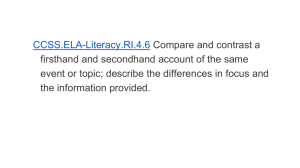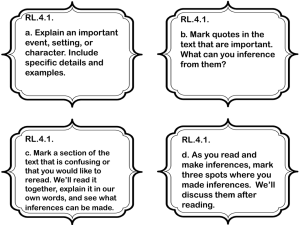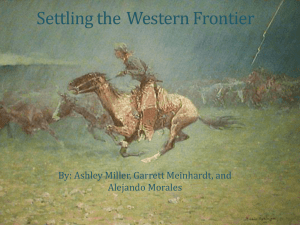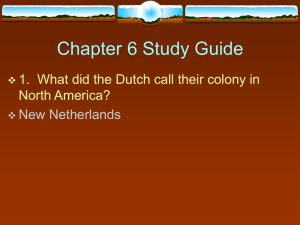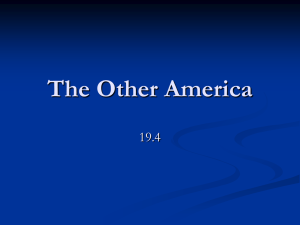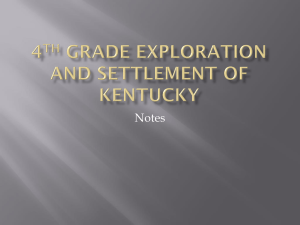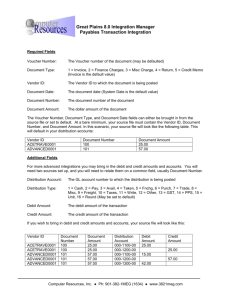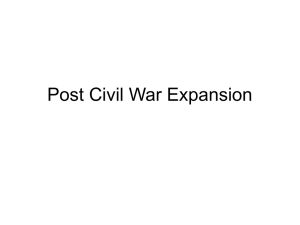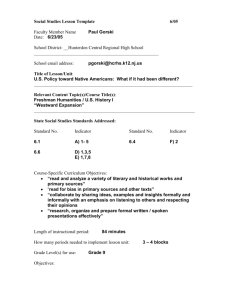Meeting the Yaocomaco at St. Mary*s City - SES
advertisement
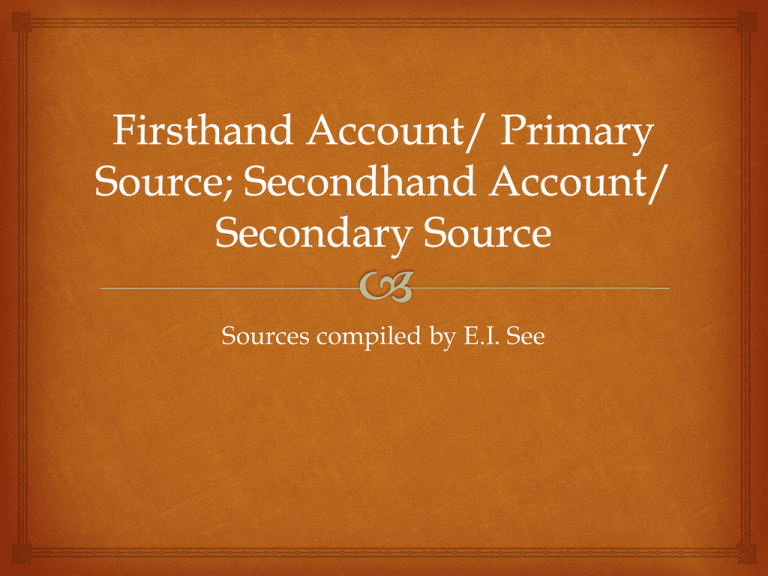
Sources compiled by E.I. See Firsthand Account / Primary Source Sample 1 “The Susquehannocks, a people used to waging war and dangerous above all to the king of Yaocomico, lays waste to every field during frequent attacks, and forces the inhabitants to seek other places of settlement out of fear of this danger. This is the reason we so quickly obtained a part of this kingdom, with God opening a path for His …eternal light ... Daily several [natives] depart and leave us their houses, fields, and crops. This is indeed similar to a miracle, that the savage people, only a few days before prepared in arms [to war] against us, yielded to us easily...” - Father Andrew White, 1634 Secondhand Account/ Secondary Source Sample 1 “When the first group of English settlers arrived in Maryland aboard the vessels The Ark and the Dove they were in need of shelter. Luckily, they met the friendly Yaocomico Indians who wished to move their tribe further away from the violent Susquehannock Indians. The Yaocomicos agreed to live in one half of their established village for one year while the settlers occupied the other half. After one year the Yaocomicos moved out of their village and the settlers had full control of their new home, which they named "St. Mary's".” - From The Native Americans of Maryland: Great Contributors Underappreciated by Amy Kirkley, 1996 archive essay contest winner Compare How were the two sources the same? How were they different? What are the advantages of reading both a primary source and a secondary source on the same topic? Firsthand Account / Primary Source Sample 2 “The natives are of tall and fine stature, with naturally dark skin, which they generally make more shocking by painting it with a specially prepared red oil in order to keep away the gnats; thus they are more intent on comfort than on appearance. They also disfigure their faces with other colors, blue from the nose upwards, red downwards, or the reverse, in various and really horrible ways.” - Father Andrew White, 1634 Secondhand Account/ Secondary Source Sample 2 “Yaocomaco people were reported to be tanskinned with dark hair. They generally wore clothing of deerhide… Pigments from earth or plant products were sometimes applied to the face and body as insect repellent and for different ceremonial purposes.” - Excerpt from Yaocomaco People, Historic St. Mary’s City Compare How were the two sources the same? How were they different? What are the advantages of reading both a primary source and a secondary source on the same topic? Firsthand Account / Primary Source Sample 3 “The character of the people is noble and cheerful, and they understand well when a matter is proposed to them…They hasten toward us of their own accord with a cheerful expression and offer us what they have obtained by hunting or fishing, sometimes also cakes and boiled or roasted oysters,…Truly, if once they should be instructed in Christian precepts…they will become outstanding observers of virtue and humanity.” - Father Andrew White, 1634 Secondhand Account/ Secondary Source Sample 3 “Early relationships between the colonists and the Yaocomaco and neighboring tribes were reportedly good. English leaders, for the most part, wrote of the natives with respect. Within a few years the Jesuits, who were among the first colonists, undertook to convert the native people to Christianity with some success.” - Excerpt from Yaocomaco People, Historic St. Mary’s City Compare How were the two sources the same? How were they different? What are the advantages of reading both a primary source and a secondary source on the same topic?
